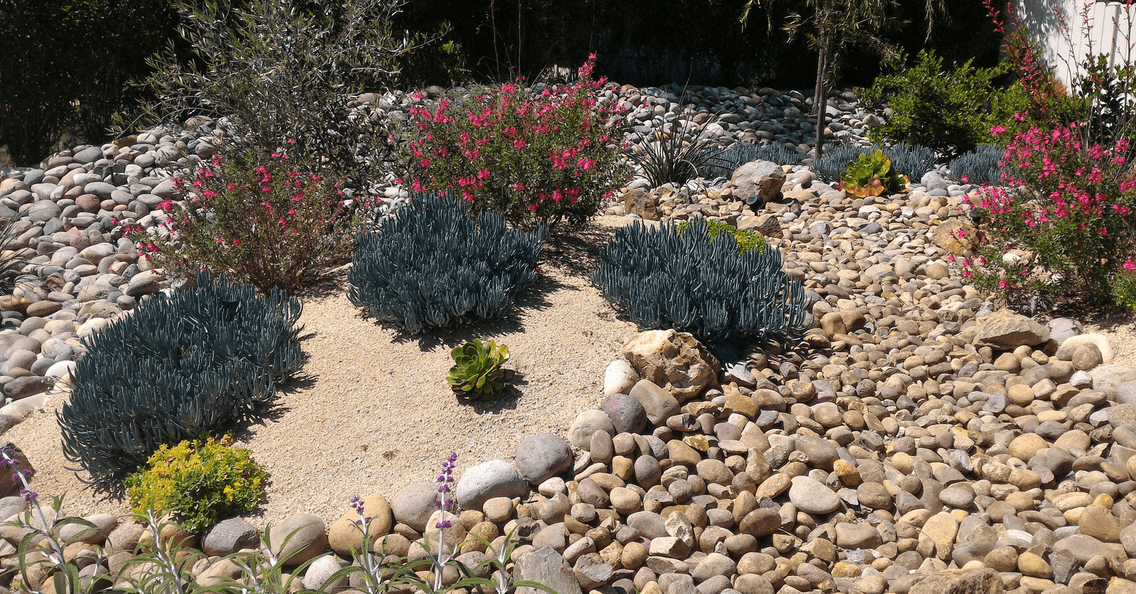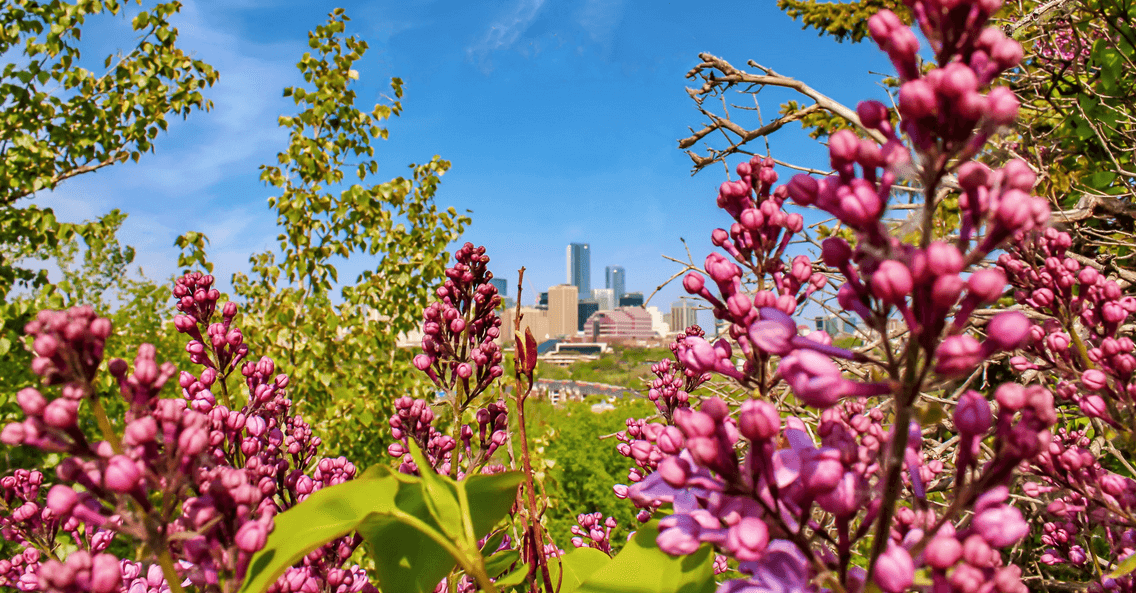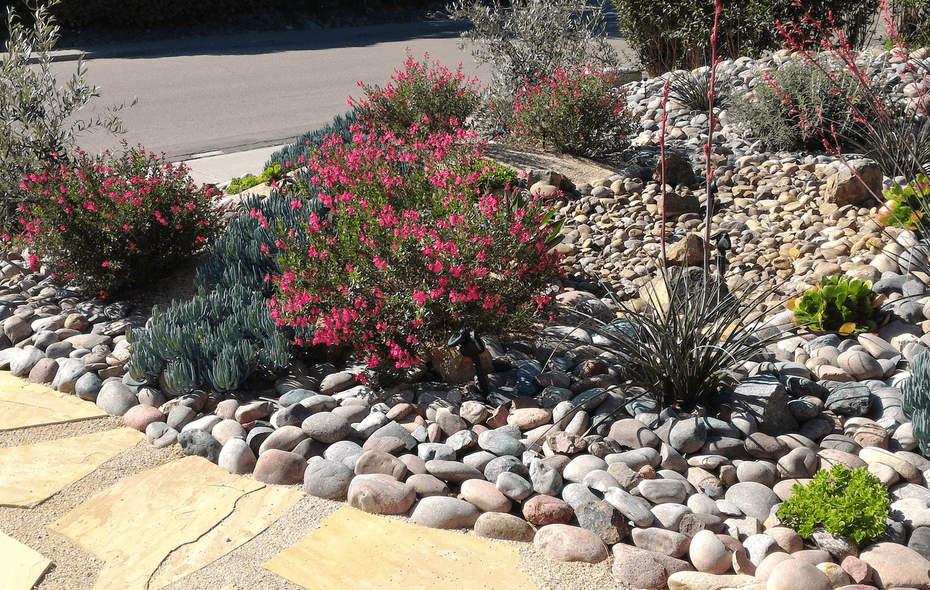In Alberta, homeowners are increasingly looking to establish sustainable landscapes that can withstand the diverse challenges posed by the region’s climate. Xeriscaping, a water-conserving approach emphasizing drought-resistant plants and innovative design, aligns perfectly with Alberta’s fluctuating weather patterns. This environmentally friendly technique garners attention among individuals who prioritize eco-conscious choices and are interested in water-saving landscaping solutions. In contrast to conventional landscaping practices that often result in high water consumption, xeriscaping offers a way to create flourishing outdoor spaces in Alberta while promoting water conservation. Whether you possess advanced gardening skills or simply desire a yard that requires minimal upkeep, delving into the principles of xeriscaping can significantly elevate your outdoor environment while contributing to eco-friendly practices.
What is Xeriscaping?
Xeriscaping is a philosophy that promotes water efficiency by using drought-resistant plants and landscaping techniques designed to minimize irrigation. At its core are seven principles that guide the planning and design of xeriscapes:
- Planning and Design: This initial step involves assessing the site’s soil type, sunlight, and natural water flow to create a cohesive plan that maximizes water efficiency.
- Soil Analysis and Improvement: Understanding and enhancing the soil’s ability to retain moisture while ensuring proper drainage is vital for supporting drought-tolerant vegetation.
- Efficient Irrigation: Implementing an irrigation system that reduces water waste by delivering water directly to the base of plants.
- Appropriate Plant Selection: Choosing native or drought-resistant plants that thrive in the local climate without requiring excessive watering.
- Use of Mulches: Applying mulch around plants to reduce evaporation, suppress weeds, and maintain a consistent soil temperature.
- Practical Turf Areas: Limiting the size of grass areas and selecting drought-resistant turf species to reduce the landscape’s water demand.
- Maintenance: Regular but minimal maintenance to remove weeds, manage watering, and prune as necessary to maintain the health and aesthetics of the xeriscape.
The History of Xeriscaping
The concept of xeriscaping originated in the southwestern United States during the late 20th century, born out of necessity in its arid climates where water scarcity is a regular concern. The word itself, “xeros” (Greek for dry) and landscaping, embodies the essence of creating lush, vibrant gardens without the heavy reliance on water. Since its inception, xeriscaping has transcended its desert origins to gain popularity in various climates as a sustainable answer to water management issues. Today, homeowners and landscapers across regions with varying weather patterns, including Alberta, are adopting xeriscaping principles to create beautiful, eco-friendly outdoor spaces contributing to water conservation efforts.
Alberta’s Unique Climate
Alberta has a distinctive climate characterized by extreme conditions challenging traditional landscaping practices. The province encounters scorching summers with temperatures soaring above 30°C (86°F) and frigid winters plunging below -40°C (-40°F). This wide temperature fluctuation exerts pressure on plants ill-equipped for such conditions. To navigate the unpredictability of the environment, a landscaping approach that is both flexible and resilient is essential to withstand the diverse weather patterns of Alberta. Xeriscaping emerges as the ideal solution, offering the adaptability and sustainability needed to thrive in Alberta’s varied climate.
Environmental Concerns
Environmental challenges like water scarcity are increasingly crucial in Alberta, emphasizing the necessity for sustainable landscaping practices. While the province boasts significant water bodies, some areas, notably the southern regions, face periodic droughts that greatly affect water availability. These water stress conditions, worsened by climate change and rising demand from urban growth and agriculture, underline the vital need for water-wise practices in all sectors, including landscaping. Xeriscaping offers a proactive solution to these environmental issues, promoting a sustainable approach that saves water resources while creating attractive, functional outdoor spaces.
The Benefits of Xeriscaping in Alberta

1: Water Conservation
One of the most compelling advantages of xeriscaping in Alberta is its remarkable efficiency in water usage. Traditional lawns and gardens can consume vast amounts of water, especially during the dry summer months, due to their high demand for irrigation. On the other hand, Xeriscaping significantly reduces water consumption by utilizing drought-resistant plants that thrive in Alberta’s climate without frequent watering. This approach aligns with water conservation efforts, helping to mitigate the impacts of drought and preserve valuable water resources for future generations.
2: Low Maintenance
Xeriscaping conserves water and simplifies garden upkeep. By selecting plants well-suited to Alberta’s climate and implementing efficient irrigation systems, xeriscaped yards require less frequent mowing, fertilizing, and pest control. This reduced need for maintenance saves time and diminishes the reliance on chemical treatments, leading to a healthier, more natural outdoor space.
3: Cost Savings
Adopting a xeriscape approach can result in considerable financial savings over time. The initial investment in drought-resistant plants and efficient irrigation may require some upfront costs, but water usage, maintenance, and care reduction translate into significant savings. Homeowners can see a decrease in their water bills and spend less on lawn care products, making xeriscaping an economically smart choice in the long term.
4: Increases Biodiversity
Incorporating native plants into xeriscaping designs ensures that the garden is well-adapted to the local climate and supports local wildlife. Native plants provide essential habitat and food sources for pollinators, birds, and other wildlife, promoting biodiversity. By creating a more sustainable ecosystem, xeriscaped yards preserve Alberta’s natural heritage.
5: Enhances Aesthetic Appeal
Contrary to the misconception that xeriscaping leads to dull or barren landscapes, many xeriscaped gardens are vibrant and full of life. Through careful selection of plants and creative design, xeriscaping can produce stunning outdoor spaces that offer year-round interest. From the soft textures of ornamental grasses to the bright splashes of colour from native wildflowers, xeriscaped yards can be both water-wise and beautiful, proving that sustainability and aesthetics can go hand in hand.
The Importance of Using Regional or Indigenous Plants in Xeriscaping

Using regional or indigenous plants in xeriscaping is critical for several reasons. Firstly, these plants are naturally adapted to the local climate and soil conditions, making them more likely to thrive with minimal intervention. This adaptability reduces the need for additional water, fertilizers, and pesticides, making them ideal for sustainable landscaping practices. Secondly, by promoting the growth of native flora, xeriscaping helps to support local ecosystems and wildlife. Indigenous plants provide vital resources such as nectar, pollen, and seeds, which are essential for the survival of native birds, insects, and other wildlife. Cultivating a garden with regional plants thus contributes to preserving the biodiversity and ecological balance within the area. Additionally, indigenous plants often have deep root systems that play a crucial role in soil stabilization and improving water penetration, further enhancing the environmental benefits of xeriscaping.
Implementing Xeriscaping in Alberta
Successfully transitioning to a xeriscape garden in Alberta starts with carefully planning and considering several key factors to ensure a beautiful and sustainable outdoor space.
Assessing Your Land
Before initiating your xeriscaping project, conducting a thorough assessment of your land is crucial. Evaluating the soil type, sunlight exposure, and existing vegetation will guide you in designing a garden that aligns with the natural conditions of your property. Soil testing, for example, can provide insights into the soil’s composition, pH level, and drainage capabilities, which are essential for selecting the right plants. Observing the sunlight patterns throughout the day can help determine the best placement for sun-loving and shade-tolerant plants. Recognizing existing native vegetation can also offer clues about the local ecosystem and which plants will likely thrive.
Design Principles
Creating an aesthetically pleasing xeriscape requires thoughtful consideration of design principles. Aim to mimic the natural landscape, using layering, texture, and colour to create interest and movement. Group plants with similar water needs together to maximize irrigation efficiency and create visual impact. Incorporate non-living elements such as rocks, gravel, and mulch to add texture and help retain soil moisture. Design paths and seating areas to integrate your garden seamlessly with the home environment, encouraging outdoor living and interaction with the natural space.
Maintenance
Even though xeriscaped gardens require less maintenance, consistent care is crucial to ensure their health and vitality. Here are several essential maintenance tips:
- Water Wisely: While xeriscaped gardens are drought-resistant, they still need watering, especially during the establishment phase. Use drip irrigation or soaker hoses for deep, infrequent watering that encourages root growth.
- Mulch Regularly: Apply a thick layer of mulch around plants to help retain soil moisture, regulate soil temperature, and suppress weed growth. Organic mulches, such as wood chips or bark, add nutrients to the soil as they decompose.
- Control Weeds: Hand-pull weeds or use mulch to minimize their appearance. Early removal prevents weeds from establishing and competing with your plants for nutrients and water.
- Prune Properly: Prune dead or diseased branches to promote healthy growth and maintain the desired shape of your plants. Pruning is best done during the plant’s dormant season.
- Monitor Plant Health: Regularly inspect your plants for signs of stress, pests, or diseases. Early detection and treatment can prevent minor issues from becoming major problems.
- Adjust and Adapt: Observe how your garden responds to the local environment over time. You may need to make adjustments, such as replacing underperforming plants or modifying watering schedules based on rainfall patterns.
By addressing these aspects, homeowners in Alberta can implement xeriscaping to create functional, eye-catching landscapes that conserve water, reduce maintenance, and enhance local biodiversity.
Maintenance and Water Efficiency in Xeriscaping Versus Traditional Landscaping
Xeriscaping stands out as an environmentally friendly landscaping alternative, primarily due to its low maintenance requirements and high water efficiency. Traditional gardens often rely on regular watering, pruning, and chemical treatments to maintain their lush appearance, which can be time-consuming and costly. In contrast, xeriscaped landscapes are designed with drought-resistant plants that require minimal water beyond what nature provides, making them ideal for arid climates and regions experiencing water scarcity. Additionally, the strategic use of mulching in xeriscaping helps retain soil moisture and suppress weeds, reducing the need for maintenance and irrigation. By focusing on native plantings and efficient water use strategies, xeriscaping conserves valuable water resources and offers a sustainable, cost-effective solution for homeowners looking to create beautiful outdoor spaces with less effort.
Overcoming Challenges and Misconceptions
While xeriscaping is beneficial in numerous ways, it comes with challenges and misconceptions, which can often deter homeowners from adopting this sustainable landscaping practice.
Common Challenges
- Adapting to a New Aesthetic: Transitioning from traditional, lush green lawns to the more natural and varied xeriscape look can be a significant shift. Homeowners may need time to appreciate the beauty and benefits of a garden filled with native and drought-resistant plants.
- Initial Costs: While xeriscaping is highly cost-effective in the long run due to reduced water and maintenance needs, the initial setup, including landscaping and purchasing specific plants, can be more expensive than establishing a conventional lawn.
- Finding the Right Plants: Identifying plants native to the region and suitable for xeriscaping can be challenging, especially for those new to the concept. It often requires research or consultation with local gardening experts.
- Educating Yourself and Others: There is a learning curve associated with xeriscaping, from understanding which plants to choose to know how to care for them properly. Additionally, homeowners may need to educate their neighbours and community members on the benefits of xeriscaping to dispel any misconceptions and encourage broader acceptance.
Debunking Myths
- Myth 1: Xeriscaping Means Zero Greenery: Many believe xeriscaping translates to a stark landscape with little to no green plants. This is not true. Xeriscaping incorporates a variety of drought-resistant plants that can add colour, texture, and life to your garden all year round.
- Myth 2: Xeriscaped Gardens Are Dull and Monotonous: Contrary to this belief, xeriscaping offers the opportunity to explore various plants, rocks, and mulch, creating vibrant, dynamic gardens full of diversity and interest.
- Myth 3: Xeriscaping Is Only for Desert Areas: While it’s particularly beneficial in arid climates, xeriscaping principles can be applied in any region to reduce water usage and maintenance needs, making it a versatile approach for sustainable landscaping across various climates.
- Myth 4: It’s Too Expensive to Implement: Setting up a xeriscape garden may initially involve some costs, such as soil amendment and purchasing native plants. However, the long-term savings in water, maintenance, and time far outweigh these initial investments.
- Myth 5: Xeriscaping Requires No Maintenance: Though low-maintenance compared to traditional gardens, xeriscaped landscapes still require some care, including occasional watering, weeding, and pruning to keep them looking their best and functioning efficiently.
By addressing these challenges and dispelling myths, homeowners can better appreciate the value and versatility of xeriscaping, leading to more widespread adoption of this sustainable landscaping practice.
Conclusion
Xeriscaping is a smart choice for Alberta homeowners, blending sustainability, aesthetics, and practicality. Reducing water usage and maintenance shows that beauty and eco-friendliness can go hand in hand. The initial setup cost pays off with water and time savings. Using native and drought-resistant plants creates vibrant outdoor spaces that thrive in Alberta’s climate and support biodiversity. Alberta residents should consider xeriscaping to conserve water and enjoy a beautiful, sustainable garden. This approach tackles water scarcity and environmental issues, promoting harmony between human living spaces and nature. By choosing xeriscaping, homeowners can help create a more sustainable future and enjoy a personal oasis while being eco-conscious.
Ready to transform your outdoor space with xeriscaping into a beautiful, low-maintenance, water-wise space? Visit Earth and Turf Landscaping’s Contact Page today to request a quote!
